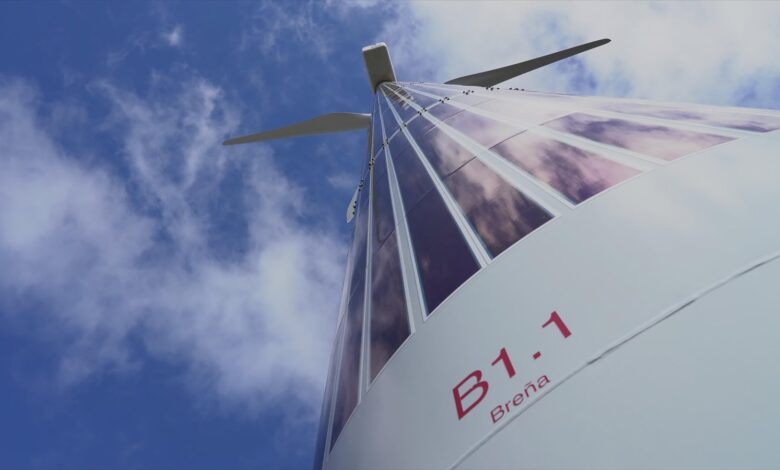A new generation of wind turbines will integrate photovoltaic panels into their structure

The rise of renewable energy continues unstoppable. Along with new technologies on the rise, such as wave power, those already consolidated are being perfected and improved in their efficiency. In the case of wind energy, one of the latest advances has been to couple it with solar energy. The approach consists of covering the wind turbine tower with photovoltaic solar panels capable of generating electricity to supply the internal systems of the turbine. Often, when wind turbines remain idle due to lack of wind, they require to keep some control systems working. Usually, they are connected to the electrical grid to supply their needs, but now the solar panels will take over the task. The pilot test has been carried out in the Breña wind farm (Albacete), in one of the wind turbines that ACCIONA owns.
The setup features 120 solar panels that occupy fifty meters of height of the tower, with a power of 9.36 kilowatts peak. The panels have been integrated with a southeast-southwest orientation to optimize the capture of solar energy. The integration of the PV solar panels is not the only innovative aspect of the project, with the choice of a new generation of organic solar panels. Barely one millimeter thick, they are characterized by the use of carbon as raw material, offer great structural flexibility and lightness, and are entirely recyclable. They also have lower maintenance costs. Although for now their performance is poorer than silicon-based models, this new type of panel has excellent potential, as the project’s promoters point out.
“Breña’s hybridization project involves optimizing the use of space for renewable energy production and is going to allow us to test the efficiency of organic photovoltaics, a technology that we believe has one of the highest technical efficiency improvement curves. That is why we have decided to test it”, said Belén Linares, Director of Energy Innovation at ACCIONA.
Organic solar panels for domestic use
Although they will not replace silicon solar panels in industrial applications, for now, organic panels could have interesting domestic applications, especially for IoT technologies. An example of this is the recent announcement by the French Commission for Alternative Energy and Atomic Energy. The French body has announced the results of research in collaboration with the Japanese company Toyoba: an organic panel with a conversion rate of 25% in a dark room with 220 lux neon lighting. This efficiency is 60 % higher than that of amorphous silicon photovoltaic cells, which are often used in pocket solar calculators.
The Japanese company has developed a soluble material capable of generating energy by means of organic synthesis technology. Thus, it can be dissolved very easily and applied evenly to a substrate. These new photovoltaic cells can work where traditional cells cannot and can thus power domestic devices in poorly lit rooms independently of the electricity grid.
Source: Acciona, PV-Magazine





